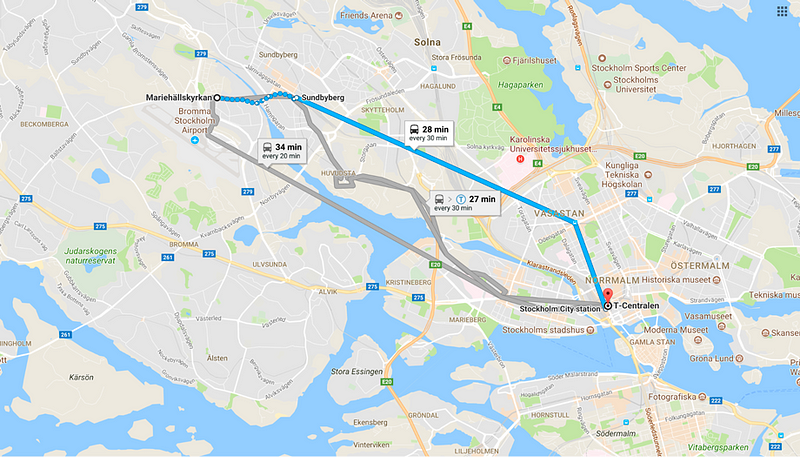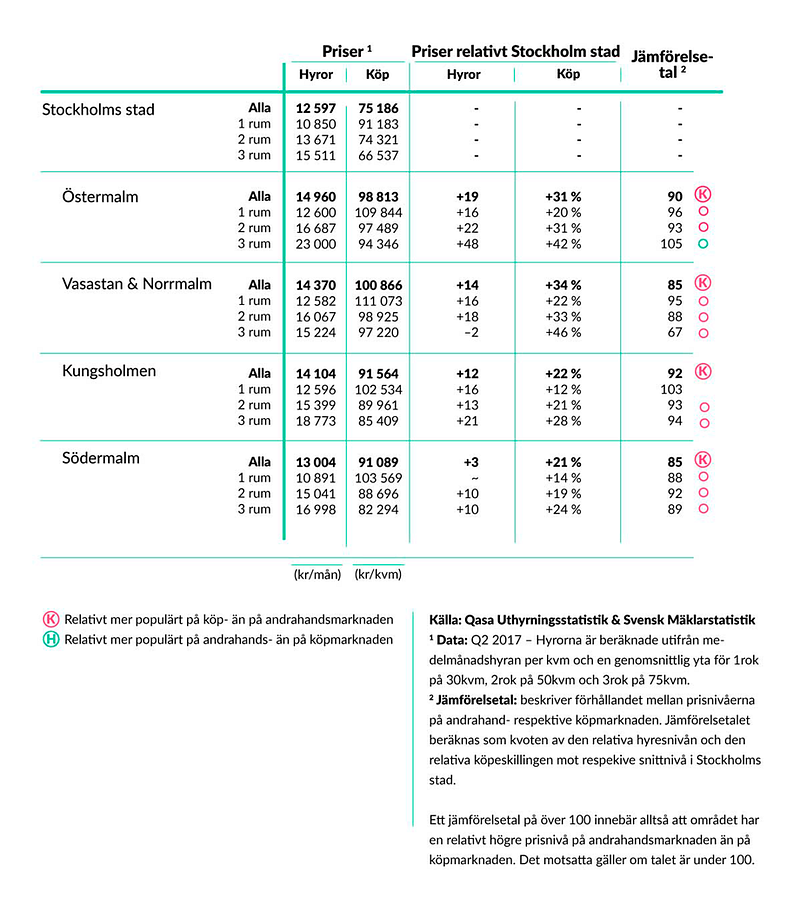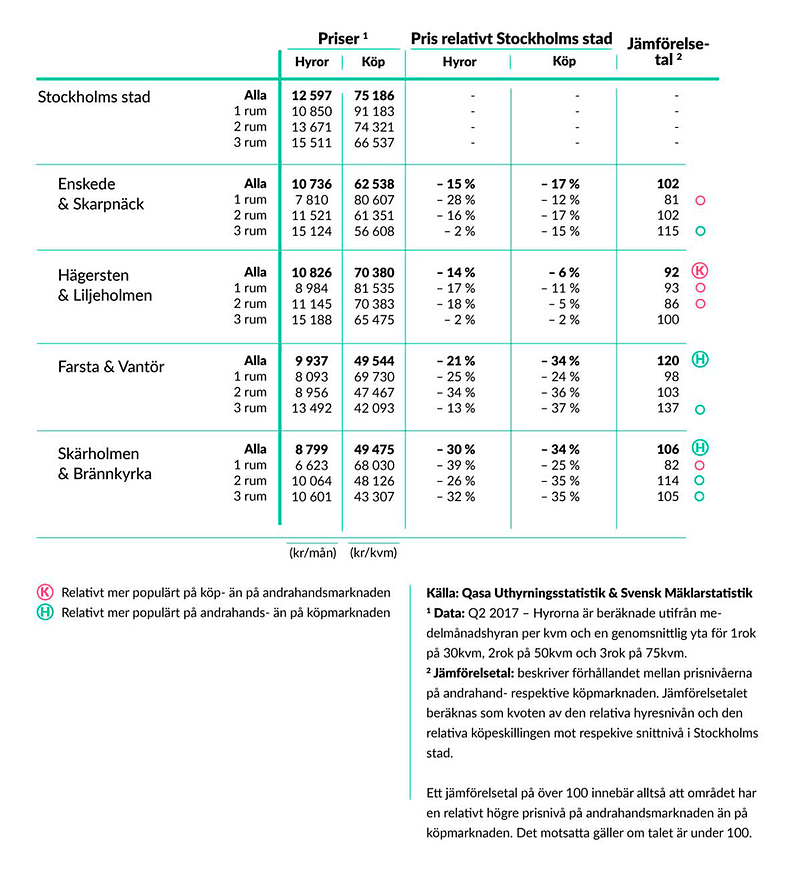- What’s the demand for IT professionals in Sweden?
- Job hunting in Sweden
- Job interview
- Getting ready for relocation
- Renting a flat
- Glossary for renting an apartment in Sweden
- Buying a flat
- First-hand renting
- Taxes in Sweden
- Food and purchasing power for food in Sweden
- Work permit in Sweden
- People
- Climate
- Healthcare in Sweden
- Facts and figures
- The best way to relocate to Sweden is with a job
Start Advertising

My name’s Sergey. I have more than 5 years of experience in the sphere of commercial software development using Java/Scala. I’ve worked on various challenging projects, from banking systems and human resource management systems to online casinos.
My wife and I recently moved to Stockholm, having lived in Wrocław, Poland, for two years before that and originally coming from Kharkiv, Ukraine.

What’s the demand for IT professionals in Sweden?
I’m currently working for NetEnt, which used to be a game developer company and now, since Evolution acquired, specialises in live casino games. However, we still have more than 1,000 staff members worldwide with HQ in Stockholm. When I was hired, the company helped individuals establish a work permit and relocate.
Sweden generally needs highly qualified professionals, and according to the Swedish Public Employment Service (Arbetsförmedlingen), there are more than 140,000 openings currently, of which more than 33,000 are in Stockholm.
Job hunting in Sweden
I wasn’t actually looking for work in Sweden — the work found me. Some years ago, I registered on a job board. Some months later, I was contacted by a recruiter who offered me a job interview at a “big multicultural game dev company” with the possibility of relocating to Sweden. At that point, Stockholm wasn’t a part of our plan because we’d been thinking for a long time about staying in Poland, but curiosity won. Seven months later, we found ourselves in Sweden. It welcomed us with unwelcoming weather: rain and snow.

November 5, 2016
Job interview
In total, I went through about seven job interviews. First, there was an interview with the recruiter, where we mostly talked about me and a little bit about the company. After the tech interview, I was invited to an interview with the manager, which turned out to be the last online interview via Skype. All the next interviews were on-site. The company covered my flights and booked a hotel near the office. On-site interviews were conducted using the same scheme as online ones, plus a tour of the office and lunch with the team.
About three months passed between the first conversation and the offer. Two more months were spent on preparing documents and visas. In the next two months, we were choosing a flat and preparing ourselves for relocation. Nowadays, the whole process takes an average of 2 to 4 months for EU/EEA citizens with sponsored jobs and over 6 months for non-EU citizens who have to meet additional requirements.
Getting ready for relocation
It all started with background screening, which included a criminal background check, debt owed to banks, and a tax evasion check. We were living in Poland at the time. For some reason, the Polish government refused to provide the necessary information, so I had to collect it from the police and tax office by myself. After that, I was contacted by representatives of a company which was engaged in relocation support and applied to the Migration Service of Sweden to receive a work visa. Unfortunately, companies cannot provide their staff with flats due to the high demand for accommodation in Stockholm. Some people even have to wait a decade for a flat. But, if you go 35 km Southwest of Stockholm, to the town of Södertälje, some companies, like Scania used to do, can offer you a flat for the entire length of your employment.
Renting a flat
Finding a flat was the most stressful and problematic issue in the relocation process. The choices were limited, most of the flats were old and unfurnished, and the prices were high. There was no time to think, as the flats could be swiped up in days, and in some cases, even by the end of the day. What was really bugging us were those common laundry rooms and the absence of an adequate bath in the majority of flats. It turns out that the practice of common laundry rooms was established in Sweden a long time ago for economic reasons. A week before relocation, we managed to find a flat and sign the contract. It was a one-room flat with the cheapest furniture I’ve ever seen. 33m² for 12,000 SEK (1,250 EUR at that time) a month in Kungsholmen, considered an excellent and expensive neighbourhood in the city centre.

A few months later, we decided to find a bigger and cheaper flat. This time, we were looking for it ourselves, and it took three months. During this period, we saw lots of flats: we didn’t like some of them, and the landlords of others didn’t like us, in some cases, it was just that we took too long to make a decision, and someone rented the flat earlier than us. In the end, we found a 2-room flat (1 bedroom and 1 room combined with a kitchen), in a new building, without furniture, for 11,000 SEK (1,100 EUR) a month in Bromma (also considered a good neighbourhood not far from the city centre) near the airport with the same name.

It should be mentioned that, regardless of whether you rent a furnished flat or not, there will always be an equipped kitchen and bathroom. From my own experience, if you have enough money and an opportunity to rent a 45m² flat (or a bigger one), Kungsholmen is the best island in Stockholm to live on.

Norr Mälarstrand, Kungsholmen
Glossary for renting an apartment in Sweden
When you see tables comparing prices in different districts in Sweden, you’ll need this mini-glossary. Hyror refers to the rent of a flat, and Kop refers to the purchase. The price is shown for a month in the case of rent and for m² in the case of purchase. The prices are given in Swedish krona or SEK.

South of Stockholm:

West of Stockholm:

Sites for finding a flat in Sweden:
How to find an apartment in Sweden →
Buying a flat
After roaming between rented flats for 6 months, we decided to buy one on a mortgage. Interest rates are lower now than they have been historically, but they have risen slightly since then. Back then, they were around 1.5-2%. Today, in 2024, they are closer to 2.5-3.5%. This still makes them relatively low by historical standards, and it means your monthly mortgage payment might be comparable to what you’d pay in rent, ranging from a little over 10,000 SEK to 15,000 SEK (or 1,000-1,500 EUR).
The only difference is that you pay for your own property, not somebody else’s. Things are quite easy with getting a mortgage: you are supposed to possess at least 15% of the flat’s price (keep in mind it could be higher than 15% depending on your location and the type of loan you choose). In fact, you have to have about 5% of the sum, and the remaining 10% can be borrowed from a bank at a 4-10% interest rate, but I wouldn’t recommend this as an option. When you have the money, you have to turn to your employer for a reference stating that you have completed the probation period and have a permanent job and income. After that, you must go to a bank for a “promise” (lånelöfte) that, when you find your dream flat, the bank will give you the 85% you lack. Writing or going to several banks is better to see where the best conditions are offered.
This is an example of a mortgage calculation for a family of two, provided both work and have a salary of 36,000 SEK (roughly 3,200 EUR) a month before tax. This means they have about 500,000 SEK (47,000 EUR) to make the initial payment. The price for the 2 people can afford is about 3,330,000 SEK (295,000 EUR), and the monthly payment can be up to 9,528 SEK (850 EUR). People usually look for flats on sites like Booli or Hemnet. You sign up for a viewing and see the flat. If you like it, you start making bids by texting your estate agent. The person who makes the highest bid buys the flat. Usually, the prices increase by 10% from the initial list price. If you are lucky enough to make the highest bid, and the owner of the flat has accepted it, before anybody changes their mind, an appointment is arranged at the estate agent's office, and the contract is concluded (keep in mind the process might involve a bit more back and forth negotiation between buyer and seller before a final contract is signed).
Also, it is arranged when and how the owners get the money and when you get the keys to your new flat. It should be said that what you are buying is not a flat but a share in a co-op. So, before you receive the keys, the co-op management has to establish you as a new owner. At the same time, a bank representative contacts you to clarify all the details. Just like when renting a flat, the kitchen and the bathroom are fully equipped.
First-hand renting
You can live in a first-hand rental flat for a very long time, as long as you follow the terms of your contract and pay rent on time. It’s like having your own place, but unfortunately, it can't be inherited. To get a first-hand rental, you have to join a queue system (bostadskö) managed by each municipality. The average waiting time can vary depending on location and type of flat. While 7 to 11 years is a common range, expect potentially longer waits in major cities. This is why many people register early, though the exact age for registration might differ depending on the municipality. You can find more about specific queues on the websites of each municipality, and more information here. Some expats report these lengthy waitlists have led to a resale market where the permit is sold at inflated prices.
Taxes in Sweden
It’s not a secret that taxes in Sweden are among the highest in the world. But, before I explain how they work, I’ll tell you about läns and kommuner (municipalities). All the territory of Sweden is divided into 21 läns, similar to states or provinces. Läns are divided into kommuner, each with their rules and taxes. This tax varies depending on the kommun and ranges from 28.98% to 35.15%. For example, there is Degerfors kommun, where the tax might be higher by almost three percentage points than the national average, which is 32.37%.
In Sweden, you might pay only the local tax on your annual income, as most of the people do. Only those who earn above 598,500 SEK need to pay the 20% state tax. However, this threshold is not a hard and fast one. Instead, there’s a basic deduction that is subtracted from your total income first. You only pay tax on the remaining amount, called taxable income. There are actually two brackets, depending on your age at the beginning of the year.
- If you’re under 66, you can earn up to 615,300 SEK (598,500 + 16,800) before taxes start.
- If you’re 66 or older, the threshold is higher at 697,300 SEK (598,500 + 98,800). This is because you get a larger basic deduction if you're a senior citizen.

Pension
Pension in Sweden is divided into three levels:

- Inkomstpension (income pension): This public pension is based on your income throughout your working life. It’s 16% of your salary paid directly by your employer that goes to the people who are retired today. It also consists of the premium pension, which is 2.5% out of your salary each year. It's like a separate savings account for your retirement that you can invest as you want.
- Tjänstepension (occupational pension): This employer-sponsored pension can vary depending on your employer, industry, and negotiation.
- Privat pensionssparande (private pension savings) is a voluntary pension you can set up to supplement your other pensions.
Salaries in Sweden
The average salary in Sweden is 40,100 SEK (3,500 EUR), which is approximately 28,070 SEK (2,500 EUR) after taxes. Salaries in the IT sector range from 36,000 SEK to 66,000 SEK, depending on age and work experience.
Food and purchasing power for food in Sweden
Food in Sweden is very expensive, but it is of really high quality at the same time. Swedish food is pricier than imported food because of its high production standards. Some products that are very expensive elsewhere, like salmon, are accessible in Sweden, maybe because Norway is a top exporter and they have agreements on trade. I've made a short list of different foods and their prices.
| 🛒 Product | 💰 Price, SEK |
| Oranges (1 kg) | 20 |
| Orange juice (1.75 litres) | 25 |
| Apples (1 kg) | 12 |
| Potatoes (1 kg) | 10 |
| Chicken breasts (1 kg) | 100 |
| Salmon fillet (1 kg) | 150 |
| Cheese (1 kg) | 70 |
| Loaf of bread | 25 |
| Eggs (20) | 35 |
| Butter (0.5 kg) | 35 |
| Milk (1 litre) | 15 |
Travel passes cost about 970 SEK (86 EUR) a month and allow you to travel around all of Stockholm län on any kind of transport. The number of rides is unlimited.

Home insurance covers plenty of things, even stolen bicycles or broken phones. Insurance is mandatory for all house owners. Membership in the engineer labour union costs 240 SEK (21.44 EUR) a month, per person. The union pays unemployment compensation, provides relevant information on salaries, and makes contracts with various companies. Check all its benefits on the official site. Unions in Sweden are world-renowned for protecting their workers. All unions pledge to do that, but the Swedish ones really walk their talk.
Work permit in Sweden
To work in Sweden, you need a job offer from a Swedish employer, who must have advertised the job locally and in some neighbouring regions. Your employer starts the work permit process by providing details like your name, birthdate, and job specifics. You'll then get an email guiding you through the process of applying for the work permit, along with documents like your employment contract and passport copies.
If your family is moving with you, their permits can be applied for simultaneously. After 24 months, you can switch jobs within the same occupation without a new application. Also, for a permanent residence permit, you must have worked in Sweden for four years and show financial stability.
Blue card
For those who don’t know, a Blue Card is, in general, a work permit for an EU country. It is considered that getting a Blue Card is hugely beneficial for highly qualified workers as it provides, for example, a work permit for the spouse and, in case you lose your job, three months to find a new one. Also, two years later, if you relocate to another EU country, these two years may be considered while issuing permanent residence in this country. As you can notice, the conditions are quite similar to those I’ve described earlier for a usual work permit. The thing is, the colour doesn’t matter in Sweden. A Blue Card works well in countries like Germany, Poland, and many others, where it really makes a difference.
IT Market
Sweden’s position as a major European tech hub has remained steady over the years. The country has over 7,800 startups, attracting significant foreign investment. Established giants like Spotify and Klarna are constantly joined by newcomers such as Voi.
Beyond startups, Sweden offers opportunities for experienced IT professionals in established tech companies. Major players like Ericsson, Volvo Cars (known for their advancements in electric vehicles), and ABB (a leader in automation and robotics) all have a strong presence in the country. Additionally, global tech companies like Google, Facebook, and Amazon are actively investing in Sweden.
People
It is not typical for Swedish people to get married and have children at a young age. At 30, they are still in search. Usually, they have kids after they are 35. It is traditional for parents to share parental leave, which lasts for 480 days, one of the most generous systems in the world. Moms normally take 70% of the leave, and dads 30%, which is definitely good both for parents and for children. In general, equality is strongly promoted by the government, which shows. In most companies, there is a 50/50 initiative that aims to have equal numbers of male and female workers.
Swedish people are quite shy and reserved. They respect private space, so try not to bother anyone. But if you make friends, Swedish people turn out to be extremely friendly. Shop assistants rarely offer their help. If you need to find out something, you will need to find them first. The Swedish never sort things out or get personal. If a car is parked the wrong way, they won’t make a scene, they'll just call the police. The situation will go similarly if somebody makes noise after 10 pm on a weekday or 11 pm on the weekend. Of course, it all stays within a reasonable range, and no one will actually call the police after just one such accident. But if this happens again and again, it is quite different. Swedish people love lines. You can find electronic lines almost everywhere, but even without them, everyone knows who follows whom. It is vitally important to be honest, as honesty is a remarkable trait of the Swedish mentality. It’s better to be honest than respectful.
Sweden is an international country, which makes it so attractive for immigration. People here are accustomed to immigrants and treat them well. It even sometimes seems that it’s better to be an immigrant than a local here. You can live here without knowing Swedish. 90% of people in Sweden speak English, but I’d recommend enrolling in a free Swedish course (SFI: Swedish For Immigrants) paid for by the government, as it’s worth it. Knowing the language will help you blend into society. Also, in the classes, you can learn something new and interesting about Sweden.
Climate
Sweden is the third-largest country in Western Europe. However, there is one peculiar thing: Sweden is stretched from the North to the South, not East to West, meaning big cities have disparate climate types. Luckily, Stockholm is closer to the South, and the temperature in winter hardly ever goes lower than -5 °C. Of course, it can get as cold as -15 °C for a few days, but this is rare. You should remember that daylight in Stockholm in winter is about 2 hours shorter than in Western Europe. But Swedish people have found ways to fight gloom: candles, cosiness, cinnamon rolls, and lights on the windows.

As it is often said in Sweden, there is no such thing as bad weather; there are only bad clothes.
Healthcare in Sweden
Healthcare in Sweden is hardly different from that in other European countries. Professional medical care will be given if there is a bad accident or a threat to life. In any case, most doctors recommend staying at home, drinking hot tea with lemon, and taking care of yourself.
Facts and figures
- Capital: Stockholm
- Language: Swedish
- Currency: Swedish krona (SEK)
- Population: 10,5 million
- Total area: 450,295 km²
- Population born outside the country: 20.6%
- Education: There are nine years of mandatory secondary education. Most students study for 12 years, which includes “gymnasium” — the analogue to high school in Ukraine. About a third of them go on to study at universities and colleges.
- Working hours: The standard working week is 40 hours
- Minimal paid leave: 5 weeks
- Parental leave: 480 days shared parental leave (each parent has individual quotas, typically around 240 days) + 10 days right after the birth for both parents
- Unemployment rate: 7.2%
- Life expectancy: men 80 years, and women 84 years
- Citizenship: After living in Sweden for at least 5 years and meeting specific requirements (such as demonstrating good conduct and financial self-sufficiency). There are no mandatory tests or exams.
- Swedish passport: takes 3rd place in the Global Passport Power Rank 2024.
The best way to relocate to Sweden is with a job
One of the best ways to make the most out of Sweden is to get there with a job. And that job should help you with the relocation process. Sweden is seeking talent for their tech sector, and companies are willing to help international workers move there and level up their professional careers in Stockholm or Gothenburg.
Relocate.me is a niche platform that connects techies with companies offering help with relocation. If you apply for a job on our job board, you know the company behind that ad can help you relocate. Paperwork and all — they’ll support you so you can get your permits and move to Sweden or elsewhere. Good luck!
Subscribe to our Substack newsletter!

Get the latest visa news and tips on all things relocation delivered straight to your inbox.
Subscribe

Shoot us an email with your inquiry at [email protected].


